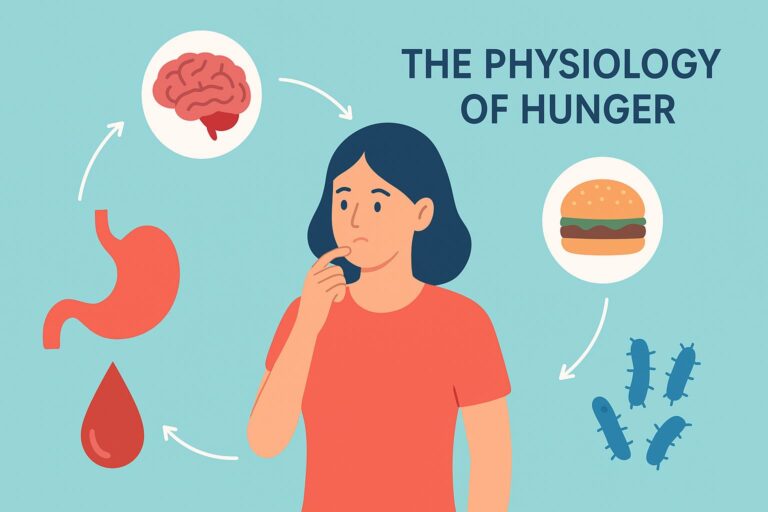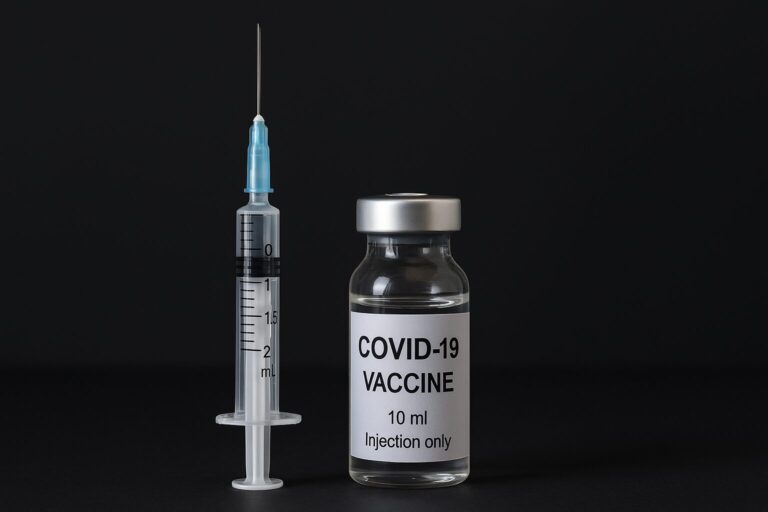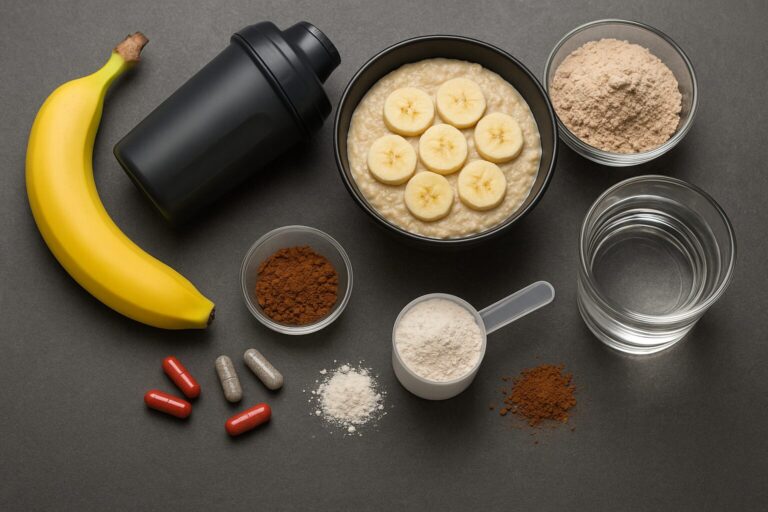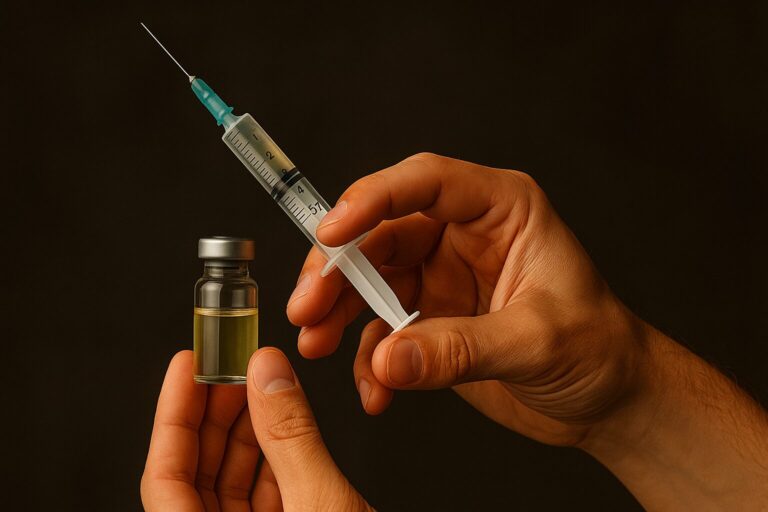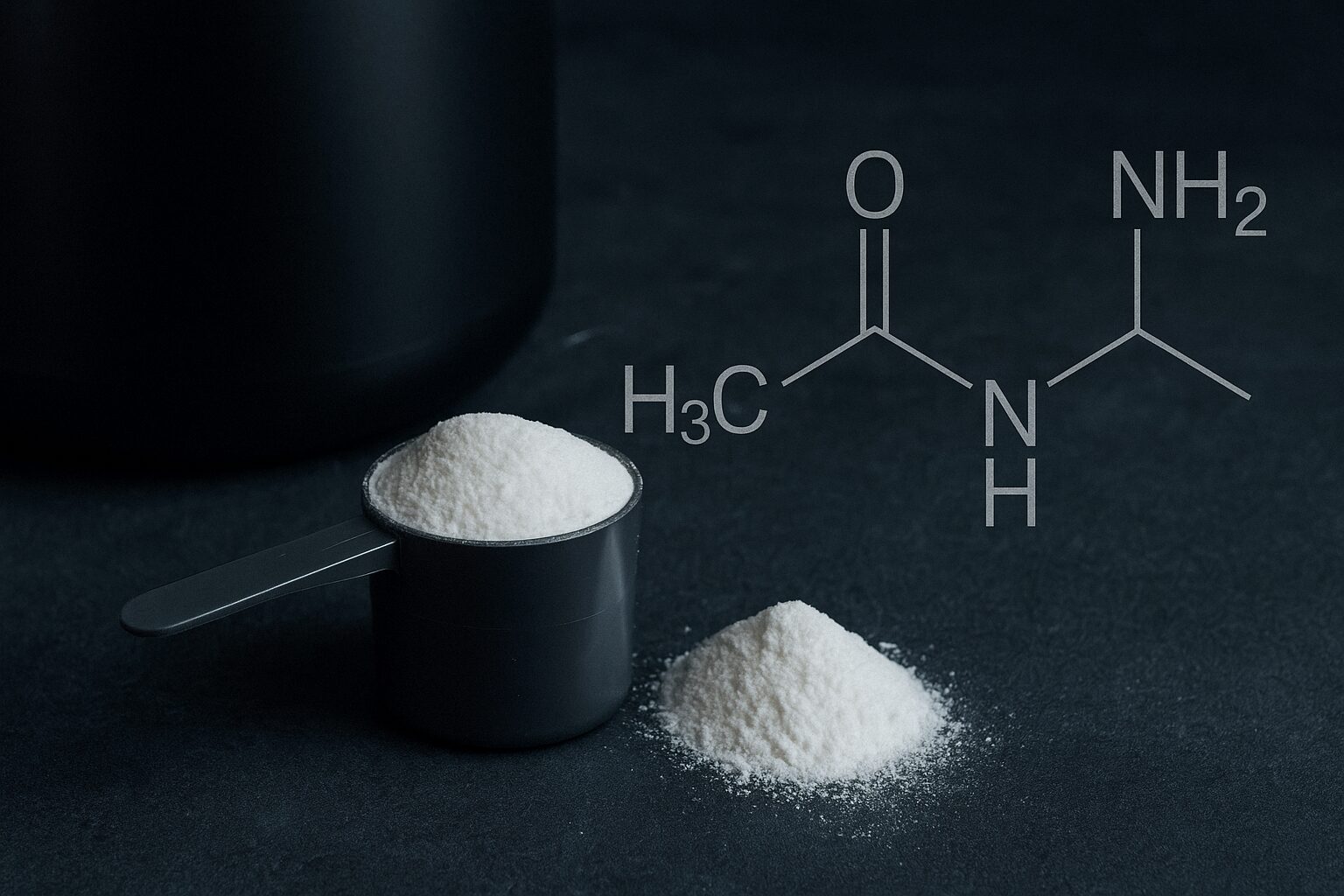
Introduction
Creatine is the undisputed monarch of sports supplementation — a molecule so studied, so validated, and so misunderstood that it has become both a scientific landmark and a cultural myth.
Despite decades of marketing cycles, “next-generation” powders, and exotic pre-workout cocktails, creatine remains at the top — the most consistently effective ergogenic aid ever discovered.
This isn’t opinion. It’s data. And in the age of misinformation, few things are as refreshing as something that simply works — reliably, measurably, and safely.
What Is Creatine, Really?
Creatine is a nitrogenous organic acid synthesized from three amino acids — glycine, arginine, and methionine.
It is produced naturally by the liver, kidneys, and pancreas and stored primarily in skeletal muscle as phosphocreatine (PCr).
About 95% of all creatine in the body resides in muscle tissue, where it serves as a rapid energy buffer during high-intensity activity.
It’s not a stimulant, not a hormone, and not a synthetic drug — it’s part of human biology itself.

How Creatine Works
Every contraction, every lift, every sprint depends on a molecule called adenosine triphosphate (ATP).
When ATP is used for energy, it loses a phosphate and becomes ADP (adenosine diphosphate).
Creatine donates its own phosphate group to recycle ADP back into ATP, maintaining cellular energy levels during explosive effort.
In short: creatine extends the life of power.
This is the biochemical reason athletes, soldiers, and researchers continue to praise it.
Its mechanism is fundamental to energy metabolism — not a trick or temporary boost.
The Phosphagen System
Human muscles use three energy systems: phosphagen, glycolytic, and oxidative.
The phosphagen system, powered by phosphocreatine, dominates in the first 10 seconds of maximal effort — sprints, heavy lifts, combat bursts.
Creatine supplementation increases muscle phosphocreatine stores by 10–40%, depending on baseline diet and training status.
That increase translates directly into more power, more repetitions, and faster recovery between bouts.
From Meat to Molecule
Creatine is found naturally in meat and fish — about 1–2 grams per pound of raw beef.
To reach the 5 grams typically used in supplementation, one would need to eat nearly one kilogram of meat daily.
Hence the value of creatine monohydrate as a concentrated, efficient source.
This is particularly relevant for vegetarians and vegans, whose dietary intake is minimal.
Studies consistently show that plant-based athletes experience larger performance gains after creatine supplementation, simply because their baseline levels are lower.
The Discovery and Early Research
Creatine was first identified in 1832 by the French chemist Michel Eugène Chevreul.
Yet it wasn’t until the early 1990s — notably after the 1992 Barcelona Olympics — that creatine captured public attention when elite athletes began crediting it for performance gains.
Since then, thousands of peer-reviewed papers have explored its effects, safety, and applications.
No other supplement has been studied across so many populations — from athletes to elderly patients, from soldiers to patients with neuromuscular diseases.
Creatine Monohydrate: The Standard
Despite countless marketing variants (hydrochloride, ethyl ester, buffered creatine), creatine monohydrate remains the gold standard.
Multiple systematic reviews — including those by the International Society of Sports Nutrition (ISSN) — conclude that no alternative form outperforms or improves absorption compared to monohydrate.
It’s stable, inexpensive, and effective. All other formulations are attempts to rebrand chemistry for marketing gain.
Performance Enhancement: What the Data Says
Meta-analyses by Rawson & Volek (2003), Kreider et al. (2017), and Candow (2022) all reach the same conclusion:
Creatine supplementation increases strength by 8–14% and lean body mass by 1–2 kg within 8–12 weeks.
These numbers are not theoretical — they are observed across sports, sexes, and age groups.
In repeated high-intensity exercise, creatine improves both peak power output and time to exhaustion.
No other legal supplement matches this consistency.
Endurance and Beyond
While traditionally associated with power athletes, newer research reveals creatine’s benefits for endurance performance, particularly in intermittent sprint activity and post-exercise recovery.
It enhances glycogen resynthesis, reduces oxidative stress, and preserves cellular hydration — factors critical for endurance recovery.
Neuroprotective Effects
The brain, like muscle, relies on ATP.
Creatine supplementation increases brain phosphocreatine levels, improving resilience against fatigue and hypoxia.
Recent studies in Neuroscience & Biobehavioral Reviews suggest potential benefits for neuroprotection, cognitive performance under stress, and even depression mitigation.
It’s not only a muscle molecule — it’s a neuroenergetic enhancer.
Cognitive Enhancement Under Stress
Research on soldiers, pilots, and sleep-deprived students shows improved working memory and reaction time following creatine use.
Under conditions of sleep loss or hypoxia, creatine provides the brain with a secondary energy buffer, reducing cognitive decline.
In military trials, participants using creatine performed better in tasks requiring vigilance and decision-making under fatigue.
This positions creatine as a dual-performance compound: mental and physical.
Creatine and Aging
Sarcopenia — the age-related loss of muscle — represents one of the greatest threats to quality of life in older adults.
Supplementation with creatine, combined with resistance training, helps preserve muscle mass, strength, and bone density in the elderly.
A 2019 meta-analysis in Medicine & Science in Sports & Exercise concluded that creatine combined with strength training significantly enhances functional performance compared to training alone.
In short: it keeps aging men and women strong, mobile, and metabolically alive.
Creatine and Women
Despite long-standing misconceptions, women respond just as effectively to creatine as men.
Research from Vandenberghe et al. (1997) and Forbes et al. (2022) confirms that female subjects show equivalent improvements in power, muscle mass, and cognitive resilience.
The myth that creatine causes “water retention” or “bulkiness” is largely unfounded; most increases occur within muscle cells, not subcutaneous tissue.
Hydration and Cell Volume
Creatine draws water into the muscle cell, increasing intracellular hydration.
This cell swelling acts as an anabolic signal, triggering pathways related to protein synthesis and muscle repair.
Hydrated cells also resist catabolic stress better — another reason creatine supports both growth and recovery.
Muscle Recovery and Injury Prevention
Beyond performance, creatine has anti-inflammatory and antioxidant properties.
Post-exercise studies show reductions in muscle damage markers (CK, LDH) and faster strength recovery.
Athletes using creatine often report fewer soft tissue injuries and faster return to training after strain.
Creatine and Hormones
Contrary to myths, creatine does not directly increase testosterone.
However, by enhancing training quality and workload, it indirectly supports hormonal balance through improved anabolic signaling.
Studies on resting endocrine markers show stability, confirming that creatine works through energy systems, not hormones.
Creatine and Hydration Misconceptions
Early claims suggested creatine might cause dehydration or cramping.
Extensive reviews (e.g., Greenwood et al., 2003) found no increase in heat-related illness or dehydration risk.
In fact, creatine users often maintain better hydration due to greater intracellular water retention.
The Loading Phase Debate
Traditional protocols recommend 20 g/day for 5–7 days, followed by a maintenance dose of 3–5 g/day.
However, long-term studies show that simply taking 3–5 g daily achieves full saturation after about 3–4 weeks — no loading required.
Both methods work; one is faster, the other simpler.
Timing and Absorption
Timing matters less than consistency, but pairing creatine with carbohydrates or protein can enhance uptake via insulin-mediated pathways.
Many athletes prefer taking it post-workout, when insulin sensitivity is higher and muscle uptake is optimized.
Creatine and Sleep Deprivation
Creatine supplementation reduces fatigue-related performance decrements from sleep loss.
By maintaining neuronal ATP levels, it sustains mental clarity and motor coordination under conditions of sleep restriction — an application increasingly relevant for shift workers and soldiers.
Vegetarian Advantage
Since creatine is found primarily in animal flesh, vegetarians have 20–30% lower baseline muscle stores.
Their physiological response to supplementation is therefore greater.
In this group, improvements in both physical and cognitive performance are particularly pronounced.
Creatine and Brain Health
Creatine supports neural integrity and ATP homeostasis in the brain, with emerging data suggesting benefits for Parkinson’s disease, traumatic brain injury, and major depressive disorder.
Although these are still research areas, the underlying bioenergetic logic is solid.
Safety Profile
Across three decades of human research, no supplement has been scrutinized more rigorously for safety.
Long-term studies (up to five years) show no adverse effects on renal, hepatic, or cardiovascular markers in healthy individuals.
Individuals with pre-existing kidney disease should consult physicians, but for the healthy population, creatine is remarkably safe.
Creatine and Adolescents
When used under supervision, creatine supplementation is safe for adolescent athletes as well.
Research supports benefits in power development and lean mass during supervised athletic programs.
It should, however, never substitute for nutrition or proper coaching.
Creatine and Mental Health
Recent clinical trials suggest creatine may enhance antidepressant response, likely through improved brain energy metabolism.
While still an emerging field, it positions creatine as a potential adjunct therapy in mental health — a remarkable extension of its biological scope.
Creatine and Immunity
Creatine may enhance immune cell energy metabolism and function.
Some evidence indicates reduced severity of infection-related fatigue, possibly through mitochondrial support and anti-inflammatory signaling.
This remains an active frontier of research.
The Economics of Efficacy
Few performance interventions deliver such high return on investment.
At about US$0.10 per serving, creatine outperforms nearly every other supplement in cost-to-benefit ratio.
It’s not just effective — it’s efficient.
The Myth of “Water Weight”
Yes, creatine increases body weight slightly, typically 1–2 kilograms, but primarily from intramuscular water — not bloating or fat.
That hydration contributes to improved performance and recovery, not cosmetic puffiness.
Understanding this distinction separates science from superstition.
Creatine and the Gut
Emerging studies show creatine may influence the gut microbiome by altering bacterial metabolism of nitrogen compounds.
While preliminary, this raises interesting possibilities for metabolic health beyond performance.
The King of Supplements
No other compound combines biochemical necessity, clinical validation, safety, and affordability the way creatine does.
It’s not a trend — it’s physiology distilled into powder form.
From elite athletes to elderly rehabilitation patients, from brain resilience to body composition, creatine bridges the gap between sports nutrition and cellular medicine.
Practical Guidelines
- Dose: 3–5 g/day (no need to cycle)
- Timing: Post-workout or any consistent time
- Form: Monohydrate (micronized preferred)
- Additives: Combine with carbohydrates or protein for enhanced uptake
- Hydration: Drink water normally; no special adjustment needed
Simplicity is the secret of its success.

The Bigger Picture
Creatine reminds us that science is not about novelty — it’s about what works.
While the supplement industry continues to chase “innovation,” the foundation remains unchanged: creatine is still king because human metabolism hasn’t evolved away from truth.
The molecule that fueled sprinters in the 1990s fuels them today — and will fuel them tomorrow.
Conclusion: Strength Through Simplicity
Creatine is not hype; it’s heritage.
It is a molecular reflection of everything Forge Biology stands for — power rooted in physiology, performance driven by science, and mastery through understanding.
It may come in a jar, but its true value lies in what it teaches: that greatness is built from simple, proven, biological fundamentals.
Creatine remains the king — not because of marketing, but because nature crowned it first.
Forge Your Mind. Build Your Biology.
Join the Forge Biology newsletter — where science meets strength.
Every week, you’ll get:
-
Evidence-based insights on training, performance, and recovery
-
Real analyses of supplements that work (and the ones that don’t)
-
Deep dives into hormones, nutrition, and human optimization
No fluff. No marketing hype. Just data-driven knowledge to build a stronger body — and a sharper mind.
Subscribe now and start mastering your biology.


